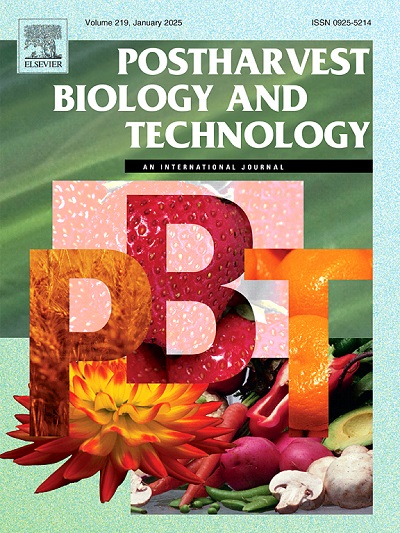Antifungal and mechanism of rose essential oil against Monilinia fructicola caused brown rot of peach fruit
IF 6.4
1区 农林科学
Q1 AGRONOMY
引用次数: 0
Abstract
Peach fruits exhibit high susceptibility to fungal pathogens, significantly limiting their storage period and resulting in substantial economic losses. Identification of fungal strains affecting peaches fruit decay revealed that Monilinia fructicola is the most aggressive pathogen. Rose essential oil (REO) has demonstrated antimicrobial activity against a wide range of microorganisms; however, its antifungal properties and mechanisms against M. fructicola have not been thoroughly investigated. In this study, both in vivo and in vitro experiments were performed, revealing that REO possesses strong antifungal activity against M. fructicola, effectively inhibiting brown rot in postharvest peaches. Scanning electron microscopy (SEM) and transmission electron microscopy (TEM) analyses indicated that REO treatment caused significant damage to the morphology and ultrastructure of M. fructicola. REO compromised cell membrane integrity, leading to increased electrical conductivity and nucleic acid concentrations. REO treatment also resulted in decreased activities of ATPase, malate dehydrogenase (MDH), and succinate dehydrogenase (SDH), adversely affecting the respiratory processes of M. fructicola. Furthermore, REO treatment also inhibited the decrease of firmness and total phenolic content. Therefore, REO presents a promising and environmentally friendly alternative to conventional fungicides for the control of brown rot in peach fruits.
求助全文
约1分钟内获得全文
求助全文
来源期刊

Postharvest Biology and Technology
农林科学-农艺学
CiteScore
12.00
自引率
11.40%
发文量
309
审稿时长
38 days
期刊介绍:
The journal is devoted exclusively to the publication of original papers, review articles and frontiers articles on biological and technological postharvest research. This includes the areas of postharvest storage, treatments and underpinning mechanisms, quality evaluation, packaging, handling and distribution of fresh horticultural crops including fruit, vegetables, flowers and nuts, but excluding grains, seeds and forages.
Papers reporting novel insights from fundamental and interdisciplinary research will be particularly encouraged. These disciplines include systems biology, bioinformatics, entomology, plant physiology, plant pathology, (bio)chemistry, engineering, modelling, and technologies for nondestructive testing.
Manuscripts on fresh food crops that will be further processed after postharvest storage, or on food processes beyond refrigeration, packaging and minimal processing will not be considered.
 求助内容:
求助内容: 应助结果提醒方式:
应助结果提醒方式:


